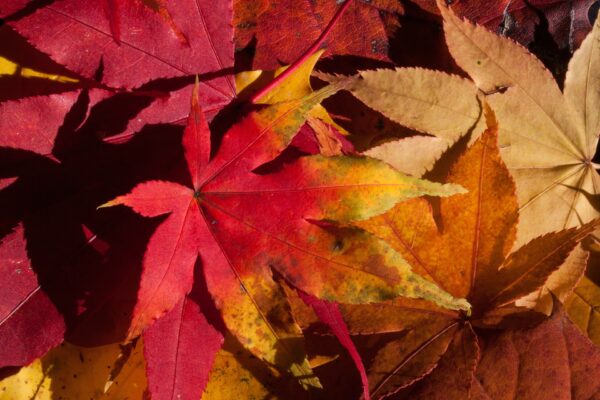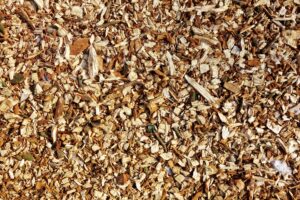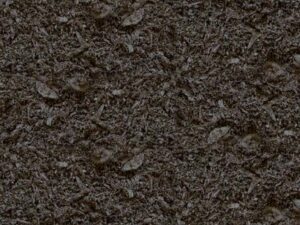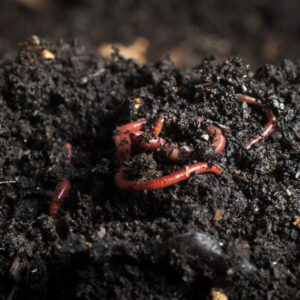
When we first get the hints of colder weather to come, we tend to withdraw into our homes for warmth and out of the garden. However, this is a great time of year to warm up by applying mulch to your garden beds! Not only do you get a good workout, but your garden soil and plants will benefit by improving drought and cold tolerance and show improved vigor next spring. There is no rush to get mulch onto your beds; as long as you are not working on frozen ground, you can do a little at a time and enjoy the work on sunny and crisp fall days.
What is mulch?
Mulch is any layer of organic matter applied to the surface of soil to prevent weeds from growing, conserve moisture in soil, and protect soil integrity.
Weed Prevention
Many of the weeds we encounter in our garden beds in the Pacific Northwest are annual weeds (grow from seed to produce seed in one year or less) that thrive in cooler weather in fall or spring – sometimes in both seasons. They further their life cycles by producing thousands if not tens of thousands of seeds PER PLANT! Examples of some of these familiar plants include chickweed (Stellaria media), bittercress (Cardamine hirsuta) – also known as shotweed for its ability to shoot you in the eye with seeds when you are weeding the garden, annual bluegrass (Poa annua), purslane (Portulaca oleracea) a succulent weed that can double as a groundcover in veggie beds, groundsel (Senecio vulgaris) – a Class C noxious weed in Washington State, and rough pigweed (Amaranthus retroflexus), an edible member of the same family as spinach. Bittercress, purslane and chickweed are also edible plants. When we pull or hoe weeds, we open the upper few inches of soil to a flash of sunlight which includes a far-red spectrum of light which we cannot detect but which triggers seeds to germinate. It is beneficial to add mulch to your garden beds to prevent the copious seeds dropped by these annual weeds from sprouting and especially when we have disturbed the soil and allowed light into it. Mulch inhibits germination by blocking light and literally smothering the seeds that are trying to germinate.
Conserving Moisture
Mulch is important for helping to keep moisture in your garden soil. Since mulch is composed of some form of carbon based organic matter it is excellent for holding water and reducing evaporation from the surface of soil. It will help keep the soil moistened underneath. Even in the winter it is crucial that our plants are not dehydrated as we dip into freezing temperatures. Plant cells need to be “plump” with water in order to be able to withstand cold temperatures. Dry air, wind and cold add insult to injury when the soil is too dry. Mulching the soil now is much easier than trying to haul water to your plants in freezing temperatures.
Soil Integrity
We get our heaviest rainfall in the winter months, generally November through January, sometimes seeing a hefty 7 plus inches in November. When we get heavy rainstorms, those raindrops pelt the ground and compact soil in the garden. All that water also takes soil nutrients and moves them deeper into the soil out of range of plant roots and often into surrounding bodies of water, which is unlucky for our garden’s health. Adding mulch to the soil surface helps to break up that rain and keep it in place, reducing compaction and avoiding nutrient loss. Mulch also plays a crucial role in mitigating soil temperatures. It can warm soil during the winter, when our northwest plant’s roots are still actively growing.
Mulch Types
There are a variety of types of organic mulches we can apply to our garden beds, from vegetable gardens to tree and shrub or perennial beds. This can include materials already in place in our gardens.

Leaves
Now is the time of year we are busy raking and loading leaves into the curbside yard and food waste bins for our waste haulers to drive off to local commercial composting facilities. We are very fortunate to have this service in our region, where quality organic compost is created and made available to the public. Yet we spend hours raking leaves, load them in the bin, pay for the service to have them hauled off to make compost and then drive to a garden center and buy bags of materials to bring back and put on our beds, when we had free leaves in the first place! Leaves are your free mulch supply and can enhance good relations when you rake your neighbor’s leaves or offer them your free leaves for mulch. If you have a diseased fruit tree with rust or scab it is better to send those to the commercial compost facility where the compost piles reach high enough temperatures to kill off disease organisms but keep your healthy and nutritious leaves to mulch your own garden beds. Especially for the trees the leaves came from, who benefit from the garden ecology of their own leaf cover. Large leaves can be chopped up into smaller pieces by running a mower over them, especially if you use a mulching mower. Too many leaves can be managed by sharing with others or bagging them to save for later mulching projects or composting them in a pile in the garden. The resulting composted leaves are a great soil conditioner and provide great food and habitat for soil organisms, our friends in the garden who do so much work to feed our plants. Many ground feeding birds and beneficial insects benefit from leaves on your garden.

Wood Chips
Arborists make their rounds trimming trees all times of year and can get busy in the fall when preventative maintenance to minimize storm damage is underway. Using arborist chips provides great nutrition and cover for soil, are generally free to source, and are long lasting in the garden. Wood chips keep weeds down very efficiently, provide food for beneficial organisms and mycelium networks that help create healthy soil. They are composed of live plant parts so are much more nutritious than bark, which is sterile and water repellent by nature so it can protect the live portions of wood right under the bark on a live tree. They can be composed of a variety of types of trees including conifers. They smell good too! Try stopping and chatting with an arborist doing work in your area to see if they can give you their chips – they would rather dump them in your driveway than pay to take them to a transfer station. Or try Chipdrop, which compiles offers of free chips in your area from local arborists and tree trimmers, making it easier to find free chips. Sourcing wood chips can also become a neighborhood project, gathering people together who need chips but not the entire 10 to 20 yards a truck load might bring. Also try sourcing chips that someone already received through NextDoor or a Buy Nothing Facebook group for your location.

Straw
Straw is ideal for vegetable garden beds, especially tucked around overwintering vegetables like onions, cabbage, collards and kale, or underneath burlap bags sourced for free from coffee roasters. Straw bales can also be used to smother lawn when left intact in preparation for creating a new garden area next spring but used this winter for growing crops. Be sure to ask your vendor for information about the organic status of the straw to avoid potential herbicide residue. And don’t buy hay which has grass seed in it and will sow a crop in your garden!

Commercial Mixes
Several products are available in the King County area that are mixes of either sawdust or fine wood shavings and various types of animal manure compost. These mixes add the nitrogen from the manures to the carbon of the wood products and provide a fine textured nutritious mulch that looks like soil, which some people prefer the look of. Check your local garden centers, soil yards and nurseries for products in bulk or bags.

Compost
Your own home made compost or bagged or bulk compost available at local businesses also makes an excellent mulch, especially in vegetable gardens over the winter. While not as efficient as other types of mulch in keeping weeds at bay, compost will still offer all the other soil building and protective functions of mulch for your soil. Compost is even available at the grocery store! You might even be bringing a bit of your own garden back to your yard when you purchase compost.
Sheet Mulch
This method of mulching is used when you need to curtail a weedy garden area or want to reduce parts of your lawn to create a different type of garden. Cardboard or newspaper is spread over the ground, overlapping edges so there are no gaps, moistened with water, and covered with mulch. Often wood chips are used for this method as they last and are good weed inhibitors over the period of time you leave the mulch in place. Once the weeds or lawn underneath has died you can begin converting the space by planting it. Wood chips can be raked aside and reused as mulch around the new planting.
How to Apply
Mulch works best when spread thickly enough to smother weeds, warm soil, intercept rain, and conserve moisture. Spread mulch on the soil surface, keeping away from woody trunks of trees and shrubs. Avoid covering growing points on perennial plants and keep it off the leaves of lawns and groundcovers. For tree and shrub beds aim for 2 – 4 inches of wood chips, wood/manure blends, leaves, or if using bark, a dark composted coarse bark product. For perennials and vegetable gardens apply 1 – 3 inches of leaves, or compost, or straw. Do it when the ground is not frozen to avoid damaging the soil structure of the beds or lawn when walking on them. Next spring you can assess if you need to add more mulch as needed before the spring weeds begin to sprout.
For more information download our resource sheets and call the Garden Hotline to get personal advice about your garden.
